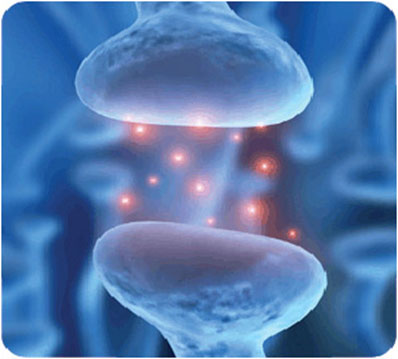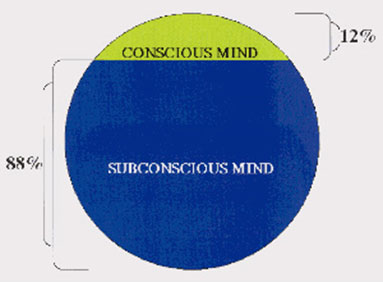Mental state and thought patterns are reflected in our physical health. Our thoughts are stored somehow in all our cells. They dictate cells’ actions and reactions; they relate happiness and health or condemn misery and disease.
Dr. Candice Pert, the internationally recognized pharmacologist who discovered the Opiate Receptor in the brain, spent years researching and exploring neuropeptides. She calls them ‘molecules of emotions’. These are chemical messengers circulating in our body, connecting our systems, organs, and cells. They have receptors on all body cells. The receptors for neuropeptides that signal brain happiness, elevated mood, or motivation, for instance, can also be found in our white blood cells, stomach, intestine lining, and gonads.
Does this mean that our immune cells, our stomach, and all our organs feel and understand our mood and emotions, as well as our brain, can perceive them? Dr. Pert surely believes so.
When you are sad, every cell in your body feels sad: your stomach is sad, your immune cells are sad, your liver is sad, your gallbladder is sad…when you are depressed, angry, frustrated, motivated, joyful, hopeful, grateful… all these emotions are converted into ‘molecules of emotions’ that deliver the message all over your body to every cell of your being.
Whenever you feel a physical symptom creeping in, look for the mental pattern that triggered it, teaches Dr. Deepack Chopra. For every illness, there is a mental pattern. Why don’t all people fall ill in epidemics, or catch cold in the flu season?
Why don’t identical twins show the same pattern of cancer, allergies, hypertension, diabetes, or heart problems if these, as we use to think, are gene-related? The vulnerability is there in the genes and the viruses and bacteria could surely be there in the air, but they need a fertile land to grow and manifest their symptoms.

Stress: Ailment of Our Modern Society
When we are under stress or in emotional distress, when we hold anger, envy, fear or grudge, these feelings are translated in our body into chemical reactions led by a series of hormones, neuropeptides, and neurotransmitters.
Our brains don’t differentiate between real or hypothetical danger. Whether you are attacked by a tiger or by the stock market index, the same stress hormones are released in your system: A blast of adrenaline that activates a fight or flight response. It raises your blood pressure, pumps sugar into your blood, speeds up your heartbeat’s rate and slows down your digestion.
The difference here is that in case of an attacking tiger, your running, fighting or fleeing dissipate the excess sugar in your blood and use up the extra energy, and as you retreat away from the danger, your whole system can rest and restore its natural state.
On the other hand, when the attacking agent is an unfair boss, a global economic crisis, a disturbing teenager or an abusing spouse, you do not run for your life, you just sit on your sofa fretting. The triggered fight and flight response is thus here to stay and your adrenal glands keep pumping more hormones into your system; you stay alarmed, your cortisol level rises and with it comes further an increase in blood sugar levels and reduction of the immune response.
Chronic stress down-regulates our immune system’s ability to fight invaders and infections. It suppresses immune cell proliferation, hinders antibodies production, and suppresses the function of natural killer cells, the cells responsible for attacking tumor (including cancer cells), viruses and abnormal growth.
Mind/Body Connection

Science is increasingly proving the connection between mind and body. Reovirus, for instance, the causative agent for the common cold, is thought to use the receptor of noradrenaline to enter into the body cells.
Noradrenaline is a neurotransmitter that increases in our body when we are happy and fulfilled. When the level of this neurotransmitter is elevated, it occupies its receptors, making them unavailable for viral use. That’s why we rarely catch a cold when we are in a good mood, satisfied and cheerful.
The idea of mind/body connection is as old as the famous Pavlov dogs of the 1920s that were conditioned to salivate upon hearing the bell without even seeing the food. Later, In the 30s Russian scientists proved that not only our digestive system but our immune system could also be voluntarily conditioned. They injected rabbits and Guinea pigs with a mild bacterial shot to boost their immune system and coupled this immune-boosting function with a physical stimulus such as trumpet blast. By the time, experimented animals have been able to boost their immunity upon hearing the trumpet sound alone.
Researches show that a mere dummy pill (placebo) can reduce pain, adjust blood pressure, and even dissolve tumors if the patient really believes in its effect. Scientists now know that the placebo pill actually achieves its effect through triggering the body to release its ‘endogenous pharmaceutics’.
Our body has an amazing internal pharmacy with a cure for every condition and malfunction. It secretes it in the precisely needed dose, and in the perfect time and location. It has the power to reduce hypertension, alleviate pain, prevent platelet aggregation that blocks arteries, and the list goes on.

Psychoneuroimmunology: Healing Power of Mind
Psychoneuroimmunology (PNI) is a relatively new, yet rapidly growing field of science. The name PNI was coined in 1975, by Dr. Robert Ader, the Director of the Division of Behavioral and Psychosocial Medicine at New York’s University of Rochester, to denote the relation between the psyche (our feelings, moods, and emotions), the nervous system (our thoughts and perceptions), and our physical health (immune system and hormonal production).
In the 70s, Ader studied the unconscious ability to condition our immune system. Laboratory animals were given an immune-suppressive drug in saccharin sweetened solutions. Later, when the drug wasn’t administered, it only took the sweet taste to reduce their immunity.
It wasn’t until the 90s thought that science could finally prove that we could actually control our immune functions consciously. Self-hypnosis, guided imagery, biofeedback, and visualization have been shown, without doubt, to boost immune system performance, increase white blood cell count, decrease plaque formation, and reduce hypertension.
After years of denial, our world is starting to acknowledge this amazing fact. Today, we know that tiny cancerous growths are continuously formed in our body and it is the job of a healthy immune system with its natural killer cells to surround and eliminate these tumors.
Since our emotions can be physiologically regarded as body releases of specific chemicals (molecules of emotions), thus, depression, chronic stress or suppression of emotions result in massive disturbance of these chemicals’ natural flow. And, this, in turn, affects the performance of our immune system. Could this trigger cancer formation? Many physicians and naturopaths believe so, but we are yet to prove it scientifically.
Let’s Get Practical with Our Subconscious Mind

All honest emotions are healthy emotions. There are no good or bad emotions. How we express them and act upon them is what matters.
The first step in dealing with stress, releasing negative emotions and/or changing a belief pattern is acknowledgment. We need to acknowledge our human needs and weaknesses; we need to acknowledge our right to feel angry, hurt, frustrated, anxious, or disappointed.
Next, we need to take control of our own actions, assume responsibility for our life, and choose the appropriate way of reaction. Learn and heed the lesson then let it go. Only then we can genuinely replace our distorted feelings with a positive image of love and care and achieve our true healing be it physical, emotional or spiritual.
You can read a book or attend a lecture about health and healing, understand and memorize every word, be totally convinced and committed, but will the required changes automatically appear in your life and become easily reflected on your state of health.
Unfortunately, the answer is No. Our analytical logical understanding is a function of our conscious mind, yet for the change to actually occur, we need to reach the unconscious mind. The unconscious mind is the one that actually controls our behaviors, reflexes, and stores our beliefs. It’s the one that holds the key to actual changes and healing and it is “millions of times more powerful than the conscious mind” according to Dr. Bruce Lipton.
But, how can I reach it? You might wonder. Lipton explains that the unconscious mind is a habit mind, it understands by repetition. Sincerely repeat, repeat and repeat the same action, belief and thought pattern over and over again until it becomes a habit, only then your unconscious mind will ‘get it’ and you will start to see some changes.
Ask anyone who tried to change his eating habits, exercise pattern, or lifestyle… it is never easy. In general, it is a “6, 6, 36 rule”. We need 6 weeks to abort a bad habit, 6 weeks to adopt a new one, and 36 weeks for it to become part of our new lifestyle.
This article is from our archive, originally published on an earlier date, and now republished for its importance.
The post Can My Thoughts Heal Me? appeared first on About Islam.
source https://aboutislam.net/muslim-issues/science-muslim-issues/can-thoughts-heal/


No comments:
Post a Comment